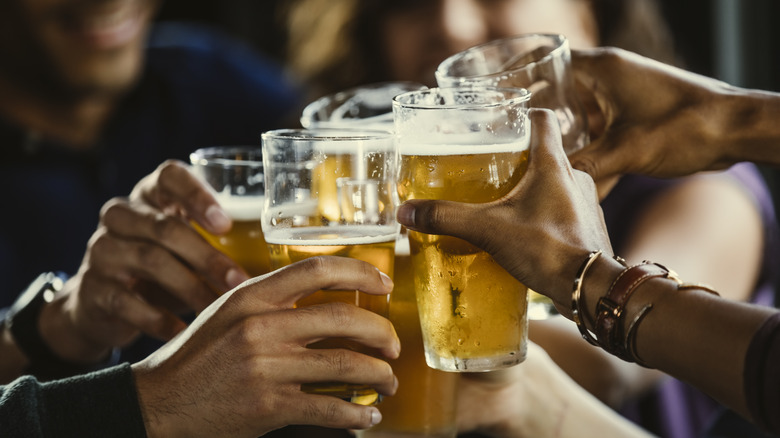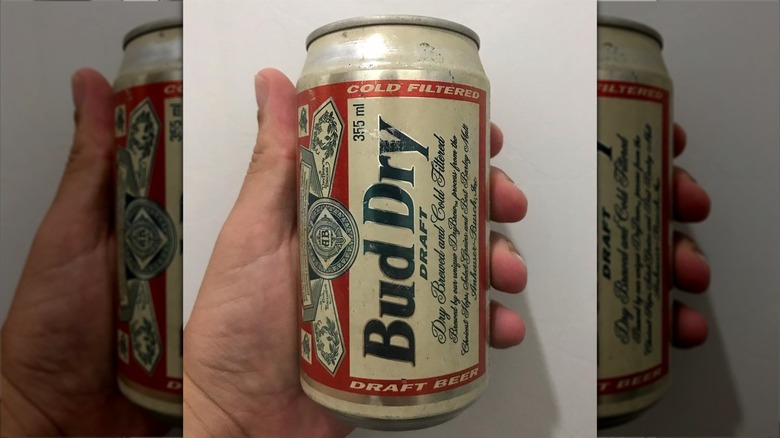The Discontinued Budweiser Beer You Probably Forgot Existed
Before the craft brew boom took the U.S. by storm in the late 1980s, innovation in the beer industry was scarce. Today, the beer aisle hosts dozens of high-octane suds meant to give customers more bang for their buck, but a few decades ago, that wasn't the case. Major producers were primarily trying to meet customers' demands for something lighter. One of the most memorable slogans of the 1990s belonged to a now-discontinued brew that intended to capitalize on just that — Bud Dry.
Launched in 1989, Bud Dry was one of the first dry lagers to hit the U.S. market. The 1980s saw the popularity of dry beer rise in Japan, with Asahi Super Dry emerging as the clear favorite. This led Anheuser-Busch to follow suit with its own version. However, the American style of arid cold ones was noticeably different than its Japanese counterparts. Where the Land of the Rising Sun produced dry brews more akin to malt beverages, Budweiser wanted to appeal to American palates seeking domestic beers that offered a more refreshing finish.
Early on, the brew was heavily marketed with the slogan "Why ask why? Try Bud Dry." But marketing efforts slowed with the release of Bud Ice in 1994 and, by 2010, the beverage once featured in the Bud Bowl commercials aired during the Super Bowl had officially been discontinued. Dry beer is still available in several forms, but Budweiser's brand has become a footnote in the history of suds.
Isn't dry beer an oxymoron?
Contrary to how it may sound, dry beer has nothing to do with wetness. The term actually refers to the level of sweetness in the drink, with dry applied to brews that are less so. During the brewing process, extra yeast is added to the mix in order to eat up all the sugar in the beer, which leaves the brew with a crisp, dry finish.
Hops, which gives beer its bitter taste, also doesn't contribute to how a dry cold one is classified (though hoppy IPAs often have a dry aftertaste and even stouts can be brewed so that no extra sweetness lingers after a sip). While the '90s dry beer fad was relatively short-lived, there are still plenty of beers that are considered dry today. Sapporo Dry and Torpedo Extra IPA are two examples available in most U.S. markets, while Asahi Super Dry is still sold in many stores, too. The unique XXXX beer also had a dry variety for a time, though it currently isn't found on the company website.
Despite not taking off the way Anheuser-Busch had hoped, there are still superfans of Bud Dry that wish it would make a comeback. Some folks have even put up a petition on Change.org to encourage a return to the beer aisle. However, judging from the scant 114 signatures on the plea as of writing, the discontinued Bud Dry probably won't be returning to store shelves anytime soon.

